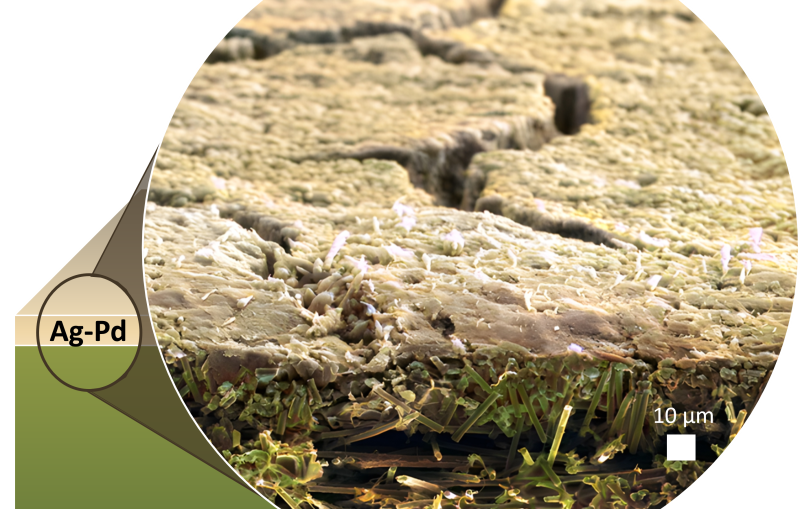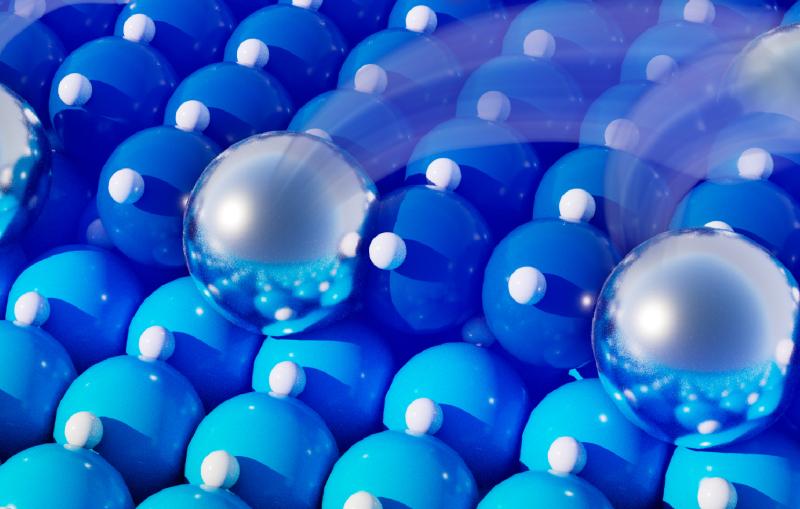SLAC Researchers Team Up on Potential Fuel Cell Advance
A discovery by SLAC researchers into how chemical reactions take place on a platinum catalyst could lead to more efficient, less costly fuel cells.
By Lori Ann White
Scientists at SLAC National Accelerator Laboratory put together clues from experiments and theory to discover subtle variations in the way fuel cells generate electricity – an advance that could lead to ways to make the cells more efficient.
As reported today in Nature Communications, researchers focused powerful X-rays from SLAC’s Stanford Synchrotron Radiation Lightsource (SSRL) on one half of a tiny but functional fuel cell and watched it combine oxygen and hydrogen to make water. They saw something they didn't expect.
“We were surprised to find two possible routes for this reaction to take place,” said Hirohito Ogasawara, a staff scientist at SSRL and with the SLAC/Stanford SUNCAT Center for Interface Science and Catalysis. What's more, one route uses less of the fuel cell's energy to complete – leaving more energy to power a car, for example.
However, the news wasn't a surprise to SUNCAT theorists, who had already proposed the existence of such variations in fuel cell chemistry. These variations are important because fuel cells turn chemical energy to electricity, and even a subtle difference can add up to a considerable amount of electricity over time.
On one side of a fuel cell, hydrogen gas is split into protons and electrons, which travel to the other side of the cell along different paths, providing electricity along the way. There they combine with oxygen gas to form water, a process that requires a catalyst to propel the reaction along. The most commonly used catalyst is platinum, a metal more costly than gold; research has focused on ways to decrease the amount of platinum needed by making the catalyst as efficient as possible. This has been a difficult task without tools that show each reaction as it takes place, step by step.
Ogasawara and colleagues used a technique called ambient pressure photoelectron spectroscopy (APXPS) at SSRL to watch the reactions taking place on the surface of the platinum catalyst in minute detail, and under realistic conditions.
"At first, what was new was the technique, and that we could see what was happening under working conditions," said Hernan Sanchez Casalongue, a graduate student in chemistry who designed and built the miniature fuel cell used to help test the efficacy of APXPS in this research. "But as we analyzed our results, we saw there were two different kinds of hydroxide on the surface of the platinum."
Hydroxide is an "intermediate species" that briefly forms on the way to the creation of water. It consists of one hydrogen nucleus bonded to one oxygen atom – O-H instead of H2O. In the fuel cell the researchers found that one type of hydroxide is "hydrated," or loosely bonded with a water molecule, and the other is not, and the one that's not hydrated requires less energy to take that final step to becoming H2O.
Ogasawara and Sanchez Casalongue took their discovery to SUNCAT theorists, who had already theorized that a change in the voltage applied to the fuel cell could affect the formation of hydroxide.
"This led us to the insight that tuning the hydration of hydroxide may lead to more efficient catalysis, but at the time there was no experimental evidence to back that up,” said Venkat Viswanathan, then a graduate student at SUNCAT and now a faculty member at Carnegie Mellon.
Ogasawara's experiment, possible only with APXPS, provided Viswanathan and the other SUNCAT theorists with their experimental evidence. It also gives scientists another tool for improving fuel cells: Figure out how to make more of the non-hydrated hydroxides, and the fuel cell efficiency will improve.
Anders Nilsson, deputy director of SUNCAT and a co-author on the paper, said, "This represents a real breakthrough in electrocatalysis. These intermediate chemical species have long been speculated on but have never before been directly observed. This discovery could lead to more efficient catalysts."
Ogasawara said the researchers can't give any firm numbers on how much this can boost energy production from fuel cells – "This was a proof-of-concept experiment" – but it's an encouraging development, and they are looking at reactions involving other catalysts for similar phenomena. They're also going to use APXPS to study the other side of the fuel cell reaction – splitting water to make hydrogen and oxygen.
Other SLAC/Stanford scientists taking part in this research are SUNCAT Director Jens Nørskov, Sarp Kaya, Heine Hansen, Daniel Miller and Daniel Friebel. The study also included researchers from the Joint Center for Artificial Photosynthesis (JCAP) Energy Innovation Hub at Lawrence Berkeley National Laboratory. Experimental work was funded by JCAP, and theoretical work by the U.S. Department of Energy’s Office of Basic Energy Science. Ogasawara also received support from the Japan Science and Technology Agency.
Contact
For questions or comments, contact the SLAC Office of Communications at communications@slac.stanford.edu.
SLAC is a multi-program laboratory exploring frontier questions in photon science, astrophysics, particle physics and accelerator research. Located in Menlo Park, California, SLAC is operated by Stanford University for the U.S. Department of Energy Office of Science.
SLAC’s Stanford Synchrotron Radiation Lightsource (SSRL) is a third-generation light source producing extremely bright X-rays for basic and applied science. A DOE national user facility, SSRL attracts and supports scientists from around the world who use its state-of-the-art capabilities to make discoveries that benefit society. For more information, visit ssrl.slac.stanford.edu.
The SUNCAT Center for Interface Science and Catalysis is a partnership between SLAC National Accelerator Laboratory and Stanford University. SUNCAT explores the atomic-scale design of catalysts for chemical processes related to energy conversion and storage. For more information, please visit suncat.slac.stanford.edu.
DOE’s Office of Science is the single largest supporter of basic research in the physical sciences in the United States, and is working to address some of the most pressing challenges of our time. For more information, please visit science.energy.gov.
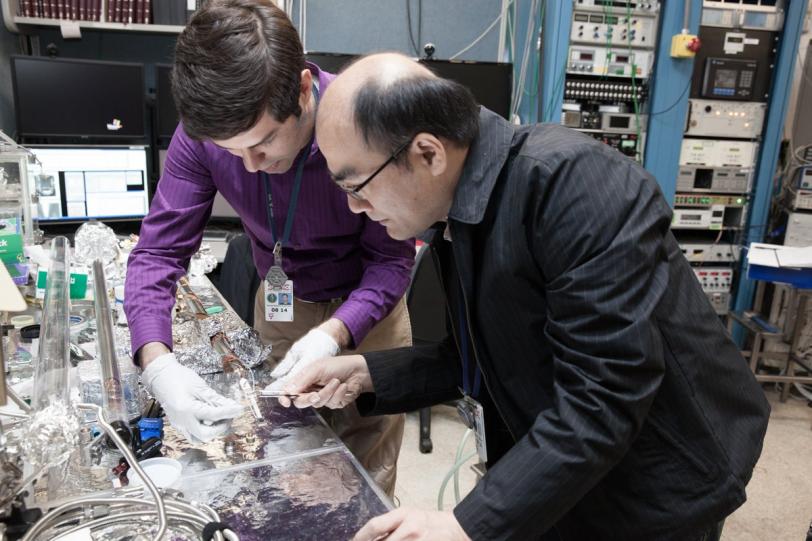
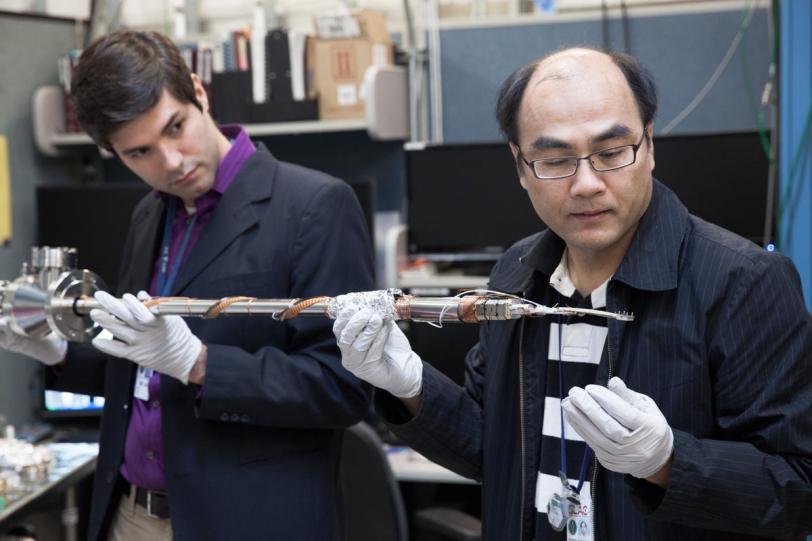
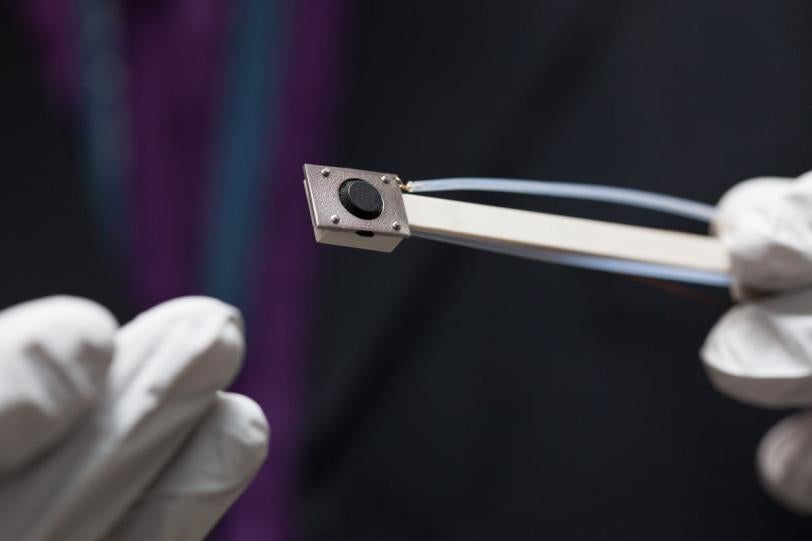
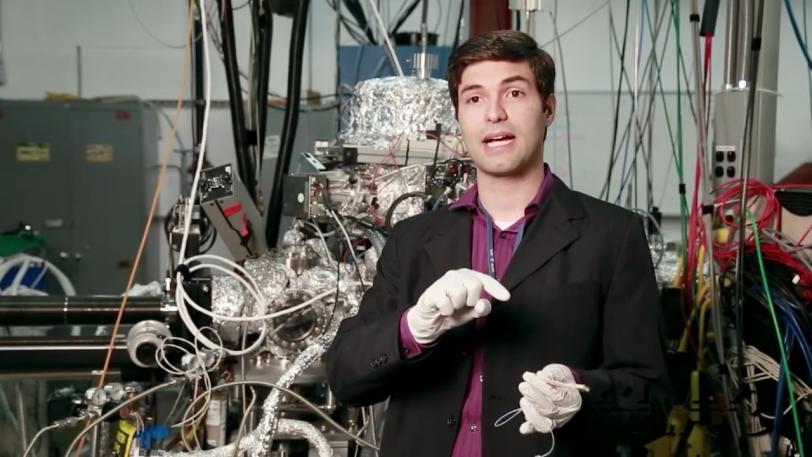
Developing More Efficient Fuel Cells
Stanford graduate student and SLAC researcher Hernan Sanchez Casalongue explains how watching a fuel cell do its work in real time can lead to a deeper understanding of the chemistry involved, which can lead to more efficient fuel cells.


